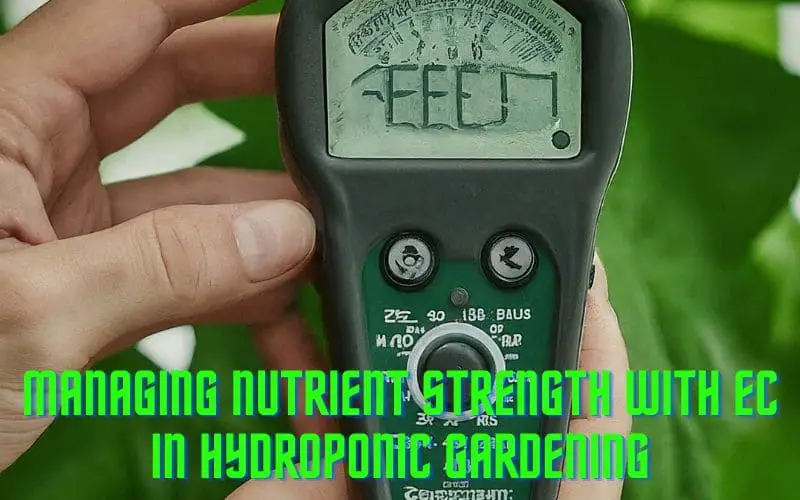Managing Nutrient Strength with EC in Hydroponic Gardening

Introduction
Welcome to the world of hydroponic gardening, where the art of plant cultivation meets innovative technology. In this article, we will delve into the nuances of managing nutrient strength with Electrical Conductivity (EC) in hydroponic gardening. By understanding the fundamental principles of EC and its relation to nutrient strength management, you will gain valuable insights into optimizing plant growth and health. Let’s embark on a journey to explore the key factors and techniques essential for effective nutrient management in hydroponic systems.
Understanding EC in Hydroponic Gardening
Electrical Conductivity (EC) plays a crucial role in hydroponic gardening as it measures the nutrient concentration in the nutrient solution. The EC value indicates the solution’s ability to conduct an electrical current, which is directly related to the concentration of nutrient ions. Understanding EC is essential for gauging the nutrient strength and ensuring that plants receive the required amount of nutrients for healthy growth.
Types of Nutrient Strength Measurement
Measuring nutrient strength in hydroponic systems involves various methods, each providing unique insights into the nutrient concentration of the solution. By exploring these measurement techniques, growers can effectively manage nutrient strength to support optimal plant growth and development.
- EC Meters: These meters measure the electrical conductivity of the nutrient solution, indicating the amount of nutrients present. They are essential for determining the overall strength of the solution and are widely used in hydroponic systems.
- PPM (Parts Per Million) Meters: PPM meters measure the concentration of minerals, salts, and nutrients in the solution. This method provides growers with precise information on the nutrient content and helps in adjusting the nutrient levels accordingly.
- TDS (Total Dissolved Solids) Meters: TDS meters measure the total concentration of dissolved substances in the nutrient solution. They are useful for assessing the overall quality and purity of the solution, ensuring a balanced nutrient environment for plant growth.
Managing Nutrient Strength Fluctuations
Nutrient strength fluctuations can impact plant health and growth in hydroponic systems. Additionally, factors such as water temperature, nutrient uptake, and environmental conditions can contribute to these fluctuations. By addressing and controlling nutrient strength fluctuations through proper monitoring and adjustments, growers can mitigate potential adverse effects on plant growth. Implementing strategies to stabilize nutrient strength is essential for fostering healthy and thriving plants in hydroponic setups.
Conclusion
In conclusion, understanding and effectively managing nutrient strength is pivotal for successful plant cultivation. By leveraging the principles of Electrical Conductivity and implementing precise measurement techniques, growers can optimize nutrient levels to meet the specific requirements of different plants. As you embark on your hydroponic gardening journey, remember that mastering nutrient strength management is the key to unlocking the full potential of soilless cultivation. How will you apply the insights gained from this article to enhance the nutrient management in your hydroponic garden?
